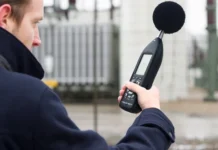Protecting your eyes while out in the yard or on the job is no easy feat unless you have purchased a quality pair of prescription safety glasses. Eye injuries can occur from flying debris, chemical splashes and radiation exposure. A generic pair of safety eyewear can’t address these risks. Here’s what you should know about buying protective eyewear.
1. Identify the Risks
There are different forms of eyewear on the market, but your choice needs to address the hazards of your environment. This means looking at the risks of impact, low lighting conditions, splashing or debris. Top-rated safety eyewear will bear an ANSI marking, and this certification identifies which hazards the safety glasses protect against.
2. Choose Your Lens and Frame Materials
Your protective eyewear needs to be functional and comfortable while it keeps your eyes safe from the hazards of the environment. Plastic frames tend to be lightweight, which is ideal for all-day use at the job. The frame should also fit your face, with key measurement areas being the bridge width, the temple length and the lens width. These are important if you are ordering prescription safety glasses, as the lenses need to be perfectly placed for optimal vision support.
Safety eyewear depends on the lenses standing up to the wear and tear of the environment. The more common materials lenses are made from include: acrylic, polycarbonate, optical glass and NXT polyurethane. Trivex lenses (NXT polyurethane) provide superior optical clarity and impact resistance in an ultra-lightweight lens. However, this is one of the most expensive lens materials. Polycarbonate offers excellent impact and scratch resistance in addition to UV protection more affordably.
3. Determine Lens Coating Needs
In addition to impact and scratch protection, your protective eyewear can be enhanced with lens coatings to address humid working conditions or lighting challenges. Anti-fog coatings keep lenses from building up condensation and impairing vision, and it also reduces the inefficiencies of continually removing the glasses for cleaning. Anti-reflective coatings can eliminate troublesome glare and minimize eye strain.
Lens tints give your safety eyewear increased protection in environments where radiation exposure is a concern. The colored coating reduces the intensity of different lights and provides additional clarity for a range of environments. While clear lenses are ideal for everyday applications, an amber tint can increase the contrast of shadows and shapes in a low-light environment. A silver mirror tint can help with the transitions between lighting conditions such as moving from indoors to outdoors.
4. Ensure Authenticity
You will find all kinds of claims online for quality safety eyewear, but unless you are ordering from a reputable seller and have a clear ANSI stamp on your eyewear, you can’t guarantee an authentic piece of protective gear. You also need to make sure that your eyewear supports your prescription if you deal with impaired vision. Leading brands like Wiley X, Bolle and Oakley carry a number of prescription-eligible safety glasses.
To find a style and safety rating that suits your needs, Safety Gear Pro carries a large selection from the industry’s leading manufacturers. You will find both sunglasses and prescription safety glasses available for easy ordering. Select your pair of protective eyewear today.



































































